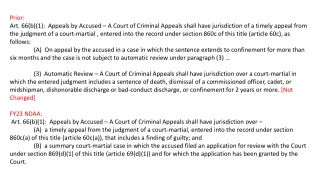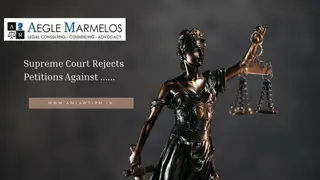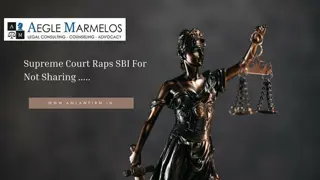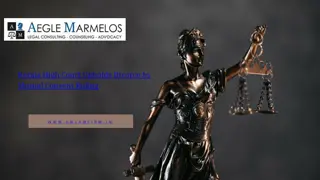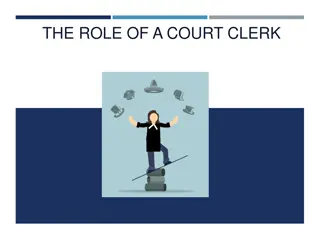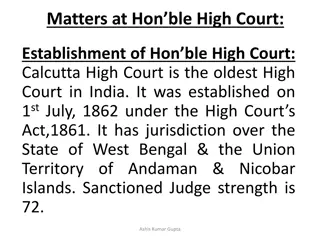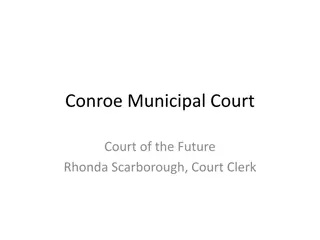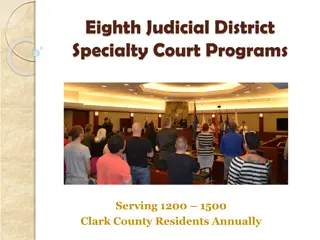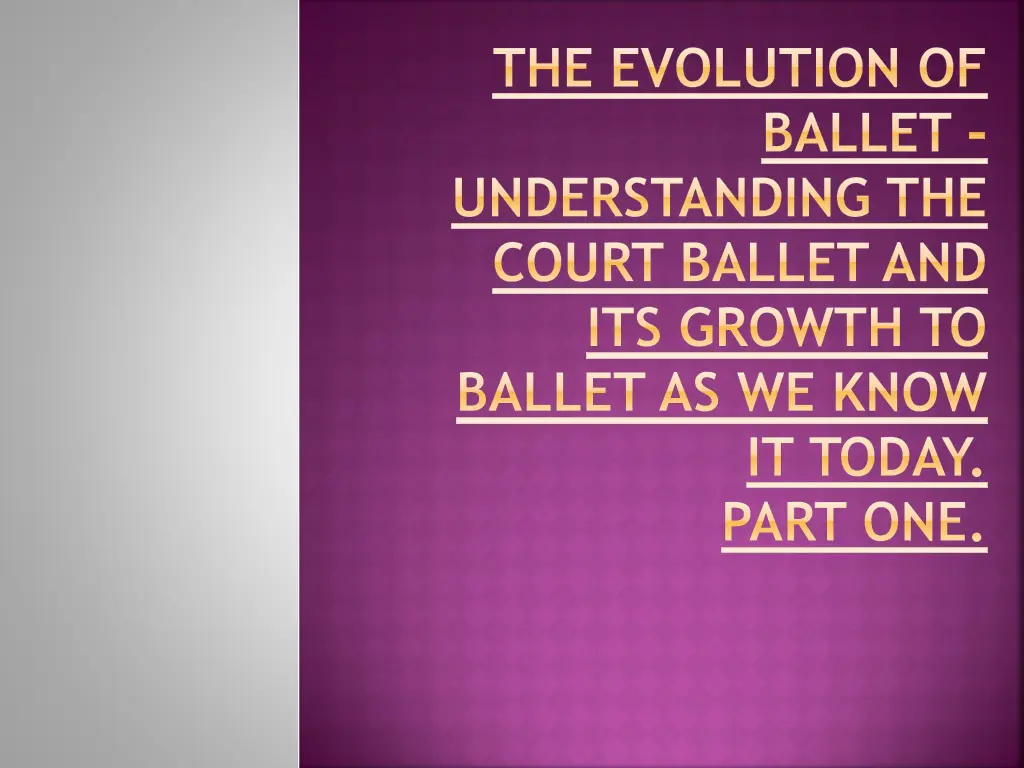
Evolution of Ballet: Understanding Court Ballet & Its Growth to Modern Ballet
Explore the evolution of ballet from French court ballets of the 16th and 17th centuries, where noble amateurs danced in opulent costumes to entertain the ruling class. Discover how court ballets laid the foundation for the art form we know today by blending art, politics, and entertainment. Witness the transition from processional spectacles to the carefully choreographed performances that glorify the State. Follow the development of ballet influenced by France and Italy, combining various artistic elements to create grandiose and elaborate productions.
Download Presentation

Please find below an Image/Link to download the presentation.
The content on the website is provided AS IS for your information and personal use only. It may not be sold, licensed, or shared on other websites without obtaining consent from the author. If you encounter any issues during the download, it is possible that the publisher has removed the file from their server.
You are allowed to download the files provided on this website for personal or commercial use, subject to the condition that they are used lawfully. All files are the property of their respective owners.
The content on the website is provided AS IS for your information and personal use only. It may not be sold, licensed, or shared on other websites without obtaining consent from the author.
E N D
Presentation Transcript
THE EVOLUTION OF BALLET UNDERSTANDING THE COURT BALLET AND ITS GROWTH TO BALLET AS WE KNOW IT TODAY. PART ONE.
FRENCH COURT BALLETS A 21stcentury observer would be hard put to recognize the art form we call ballet in the French court ballets of the 16th and 17thcenturies. The earliest of these performances preceded the invention of the proscenium stage and were presented in large chambers with most of the audience seated on tiers or galleries on three sides of the dancing floor. Since the majority of the spectators viewed the performers from above, most of their attention was focused on the figures or floor patterns traced by the dancers as they moved about. The figured dance or horizontal dance as it was called, consisted largely of geometric forms, often overlaid with symbolic meanings. They were almost always danced by single-sex groups rather than by men and women in couples.
The dancers in the earliest ballets were not the highly skilled professionals of today. Instead they were usually noble amateurs, often led by the King or Queen. In contrast to todays ballet dancers they would seem very earthbound, for the steps and movements they executed were derived from the social dances of the time, which emphasized decorum, grace and elegance rather than feats of strength or agility. The dancers costumes, based on the fashionable court dress of the day, were meant primarily to impress spectators with their opulence and inventiveness, freedom of movement was only a secondary consideration. Lengthy performances and a leisurely pace were characteristic of many of these entertainments: beginning late at night, they went on for as many as four or five hours. Early court ballets tended to be a processional flavour with decorated cars or large pieces of moveable scenery, resembling the floats in modern-day parades, carrying on dancers, singers and musicians.
These courtly spectacles, alien as they might seem to our eyes, were nevertheless the ancestors of the art of ballet. Behind them lay a long tradition of court festivals and entertainments, reaching back to the processions and mummeries of the Middle Ages. In contrast to these medieval entertainments the court ballet served secular rather than religious functions, frequently combining political motives with the desire for pleasure and diversion. It existed primarily for the ruling class, which supplied a large proportion of the performers as well as the audience. The different components of a court ballet dance, poetry, music and design were usually by an organiser; who supervised the entire production. The collaborators could be noblemen or professionals, but they all joined in expressing the aristocratic point of view. In short, the court ballet was a carefully calculated mixture of art, politics and entertainment; its chief purpose was to glorify the State, which could be symbolised as in the time of Louis XIV, by the reigning monarch.
Both France and Italy contributed to the development of the court ballet. The courts of both countries had long delighted in grandiose spectacles combining, in different proportions, costumed and masked performers, fantastically decorated card, songs and instrumental music, speeches and verses, dances, mock battles and jousts. These entertainments were presented between courses of a banquet or acts of a play; they accompanied royal entries into a town or celebrated special events such as aristocratic weddings. The court ballet, however did not simply evolve out of the traditions of it predecessors. To some degree it was a conscious invention, strongly influenced by current ideas on the arts. The Acadmie de Musique et de la Poesie, founded in Paris in 1570 by the poet Jean- Antoine de Baif (1532-89) and the composer Thibault de Courville, exerted a particularly powerful influence of the development of the court ballet. Baif and his followers wished to resuscitate the poetry, music and dance of the ancient world. The Academie s concept of an art form that would fuse all the arts was to some extent realized by the composite form of the court ballet, which united poetry, music, dance and design.
The court ballets had particularly close ties to the literature of its time. Most ballet themes derived from literary sources, and the ballets themselves included spoken or sung verses, together with explanations of the ballets intentions and symbolism, were often distributed to the audience. Symobolism and allegory were important components of the court ballet, as they were in the art and literature of the period. Persons, objects and events were more often than not subject to multiple levels of interpretation. The 16thand 17thcenturies believed that the court ballet was more than a frivolous diversion. Like the other arts, it could exert a real effect on the lives of those who watched and participated in it. Dancing in general was considered a means of socializing the individual and drawing him into harmony with the group, and formed an important part of the education of a gentleman. Most court ballets ended with a grand ballet , celebrating the return of concord or harmony within the context of the ballet; this was followed by a ball in which everyone joined, symbolically drawing both spectators and performers into accord with the ideas expressed by the performance.
BALLET DE POLONAIS, AUGUST 19, 1573, PARIS, PALACE OF THE TUILERIES This indoor palace fete, loosely termed a ballet was one of the first works to be recognized as a true court ballet, staged to honour the Polish ambassadors who were visiting Paris upon the accession of Henry of Anjou to the throne of Poland. It impressed an influential yet limited audience of courtiers and diplomats. This ballet , included spoken verse and song of greater importance than dance, embodying elements already familiar in Franco-Italian court shows. Its highlight was an hour-long ballet danced by sixteen ladies representing the provinces of France. This ballet consisted of many intricate, interlacing figures, which the ladies were said to have performed faultlessly. While its several components had been used before, Le Ballet de Polonais displays the marked French taste for figured dancing that would develop over the next century to become the dominant continental school.
North Italian dancing masters attracted to the French courts brought a syntax of steps codified during the previous hundred and fifty years. Their French colleagues would learn this vocabulary and, with additions, translate it into their own style. It is important to know however, that France was more dance- oriented than Italy from the beginning, with Italy concentrating their focus to opera-ballet, vocal virtuosity and the relationship between music and drama. It can be simplified to say that the rise of the court ballet in France paralleled the birth of opera in Italy. The development of the court ballet also coincided with the opening of the first public theatres in France and the rise of the great French playwrights Corneille and Racine. Although the court ballet shared certain tendencies and influences with contemporary opera and drama, it placed more emphasis upon dancing than the opera, which tended to reserve dances for the interludes between acts.
As the 17thcentury began, the court ballet started to diversify both its form and its subject matter. In the Ballet d Alcine (1610), the text was sung rather than spoken and more than a century would pass before dance completely disengaged itself from song. When it did, ballet emerged as a form approaching an autonomous art. Alcine also introduced a new element of comedy, which was to become increasingly important in the court ballet. The court ballet also began to draw inspiration from new sources, Chivalric romances, which were popular in the literature of the time, came into favour early in the 17thcentury. There was also a rise in the growth of pantomimic dances, which contrasted with the more formalized figure dancers in their emphasis upon characterization. Pantomimic dances often contained acrobatic elements that placed considerable demands upon the dancer s technical skill. These dances were usually performed by professionals, commoners rather than nobles, recruited from street entertainers, travelling players, acrobats and the like. With the passage of the years =, the court ballet became less exclusively aristocratic. Parts were assigned on the basis of ability rather than rank, and nobles and commoners mingled in the dances.
The introduction of the proscenium as a frame for the action had far- reaching effects on the art of ballet. It served as a distancing device between the performers and the audience, which was now called upon to admire rather than participate. The figured dances of the past lost favour as the audiences new viewpoint sharpened its appreciation of the perilous leaps , turns, and other feats of the professional dancers. The physical structure of the proscenium stage also allowed the development of increasingly elaborate stage effects, created by a variety of ingenious machines.

